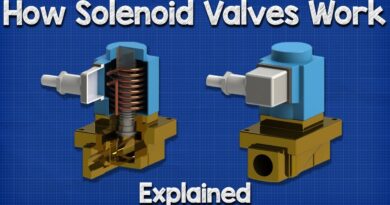Slip and Fall Hazards: Understanding Liability
Slip and fall accidents are a common occurrence and can happen to anyone, anywhere. These accidents can result in serious injuries and have long-lasting consequences. When a slip and fall accident occurs, it is essential to understand the concept of liability – who is responsible for the accident and any resulting injuries. In this blog post, we will explore slip and fall hazards, discuss the concept of liability, and provide insight into how liability is determined in these cases.
Slip and Fall Hazards
Slip and fall accidents can happen due to various hazards, including:
- Wet or Slippery Surfaces: Spilled liquids, freshly mopped floors, or icy walkways can create slippery surfaces that increase the risk of a slip-and-fall accident.
- Uneven Surfaces: Cracked sidewalks, uneven flooring, or potholes can cause individuals to trip and lose their balance.
- Inadequate Lighting: Poorly lit areas can make it difficult to see potential hazards, leading to an increased risk of slips and falls.
- Lack of Safety Measures: Missing handrails on stairs, inadequate signage, or failure to address known hazards can contribute to slip and fall accidents.
Understanding Liability
Liability refers to legal responsibility for an event or action that causes harm to another person. In slip and fall cases, liability typically involves determining who was negligent, or at fault, for the hazardous condition that caused the accident. Several factors are considered when assessing liability:
- Duty of Care: The property owner or occupier has a legal duty to maintain a safe environment for visitors or customers. This duty may vary depending on the relationship between the parties (e.g., invitee, licensee, or trespasser).
- Knowledge of Hazard: The property owner or occupier must have either actual knowledge (awareness of the hazard) or constructive knowledge (should have known about the hazard) of the dangerous condition that caused the slip and fall accident.
- Reasonable Care: The property owner or occupier must exercise reasonable care in maintaining the premises. This includes regularly inspecting the property, promptly addressing hazards, and implementing safety measures to prevent accidents.
- Contributory Negligence: In some cases, the injured party may be partially responsible for their slip and fall accident. Contributory negligence considers whether the injured party took reasonable precautions to avoid the hazard or had a legitimate reason to be in the hazardous area.
Determining Liability
Determining liability in slip and fall accidents involves a careful analysis of the circumstances surrounding the incident. Here are some factors considered when determining liability:
- Evidence and Documentation: Gathering evidence is crucial in establishing liability. This can include photographs or videos of the hazard, witness statements, incident reports, medical records, and any other relevant documentation.
- Property Maintenance: Assessing the property’s maintenance practices and records can help determine if the property owner or occupier fulfilled their duty of care in maintaining a safe environment.
- Foreseeability: Consideration is given to whether the hazardous condition was foreseeable. If the property owner or occupier should have reasonably anticipated the hazard, they may be held liable for failing to address it.
- Comparative Negligence: Depending on the jurisdiction, comparative negligence laws may apply. This means that liability and compensation may be apportioned based on the degree of fault assigned to each party involved.
Seeking Compensation
If you have been injured in a slip-and-fall accident due to someone else’s negligence, you may be entitled to seek compensation for your damages. These damages can include:
- Medical Expenses: Compensation for past and future medical bills related to the slip and fall injuries, including hospitalization, surgeries, medication, rehabilitation, and therapy.
- Lost Wages: If the injuries prevent you from working or result in a loss of income, you may be eligible to seek compensation for lost wages.
- Pain and Suffering: Monetary compensation for physical pain, emotional distress, mental anguish, and a diminished quality of life resulting from the slip and fall accident.
Truck Accidents and Slip and Fall Liability
While this article has extensively discussed slip and fall liability, it is essential to note that the principles of negligence and liability apply to other personal injury cases as well. For instance, if you’re involved in a truck accident in Utah, a truck accident attorney can help determine liability and seek compensation for your damages.
Similar to slip and fall accidents, truck accident cases require proving negligence – that the truck driver, trucking company, or another party failed to exercise reasonable care, resulting in the accident. The damages you may seek include medical expenses, lost wages, pain and suffering, and more. A knowledgeable truck accident attorney in Utah will guide you through the complex legal process, ensuring your rights are protected and your best interests are served.
Slip and fall accidents can lead to severe injuries and have significant consequences for the affected individuals. Understanding liability is crucial in determining who is responsible for the hazardous condition that caused the accident. By assessing factors such as duty of care, knowledge of hazard, reasonable care, and contributory negligence, liability can be established. If you have been involved in a slip and fall accident, consult with a personal injury attorney to determine your legal rights and seek appropriate compensation for your damages. Remember to gather evidence, document the incident, and act promptly to protect your interests.




